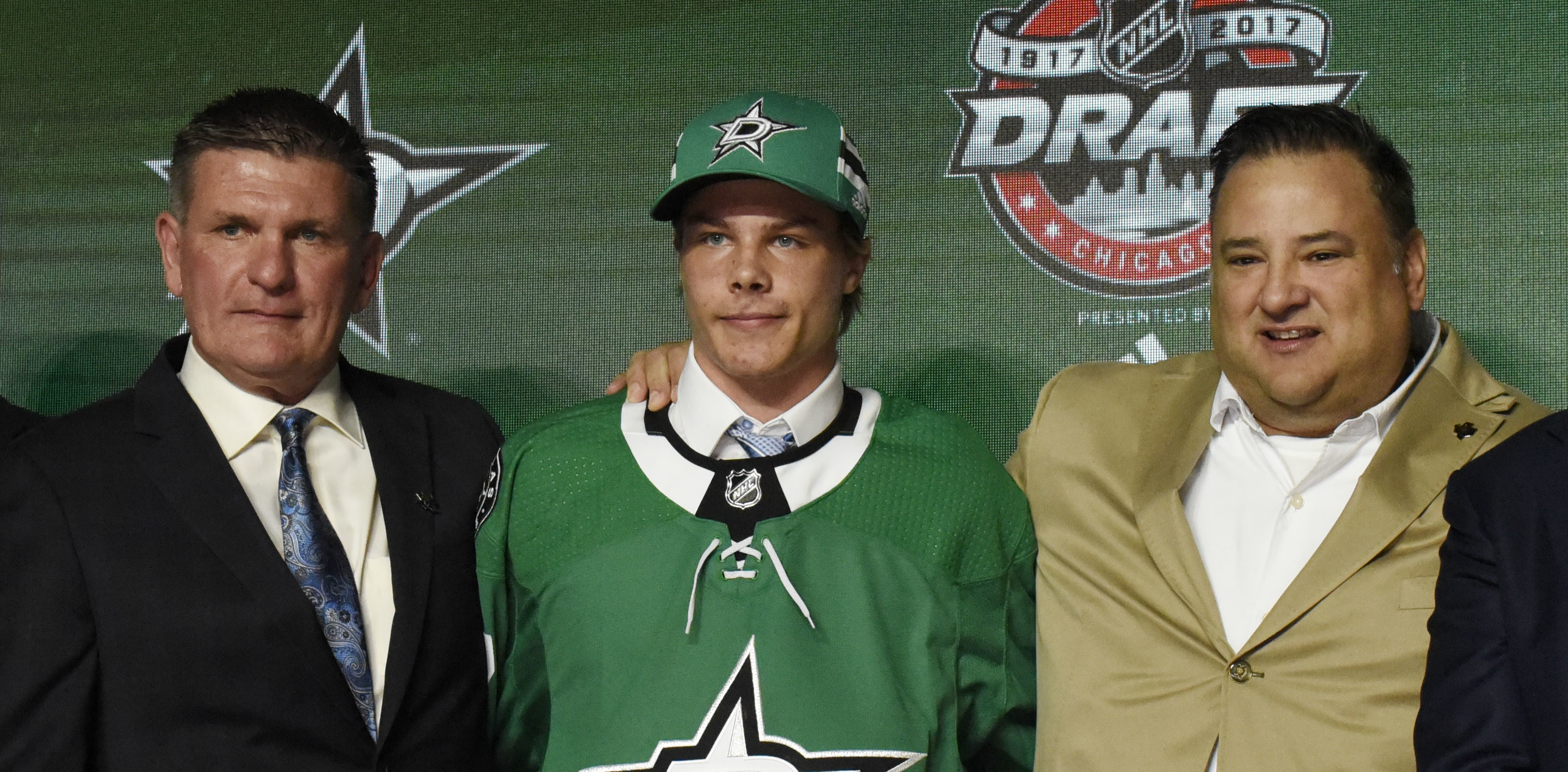In 10 months the NHL Draft will be held in Dallas at the American Airlines Center.
While it might be closer to home for the fans, that hasn’t changed any plans for Dallas Stars director of amateur scouting Joe McDonnell and his staff, who have already started laying the ground work for making their first pick in 2018.
“It’s fun to have it at home and in front of your fans, in a way I guess that means you have to have be even more prepared,” McDonnell joked earlier this week in Traverse City. “But it doesn’t really change anything for us. We’re still going to approach it the same way and we’re going to do our best to make sure we recognize the best future Dallas Stars.”
McDonnell and Stars general manager Jim Nill have made their mark evaluating amateur talent over the past two decades. When Nill and McDonnell both worked for the Detroit Red Wings they were responsible for drafting and finding several of the key players that defined a dynasty in Detroit.
“They did a great job here, there is a reason they’ve quickly found success and had young players ready to go in Dallas,” Red Wings general manager Ken Holland said. “Dallas is in a good spot with those two.”
McDonnell is now working on on a similar reputation in Dallas. While the 2014 draft had it’s shortcomings, the 2015 and 2016 draft classes have received positive reviews. The 2017 class was highlighted by Miro Heiskanen, the No. 3 pick, and Jake Oettinger — widely considered the top goalie available in the draft.
Those successes are built on amateur scouting. So what does the amateur scouting plan look like for the next nine months leading into the 2018 NHL Draft?
It’s a team effort and Stars scouts focus on their respective areas in late September and early October.
During that time a scout will try and see each team they’re responsible for at least once, and many they’ll see at twice or more. That catch-all strategy carries into November, when McDonnell and the Stars cross-over scouts will head to Europe for international tournaments, touch base with European scouts, and start to sort players into projected rounds.
“At that point we we’ll have it narrowed down to kids that should go in the top-three rounds,” McDonnell said. “So I’ll start seeing those guys, so will the cross checkers. For example I’ll typically head to see those kids in Western Canada after the European tournaments.”
In mid December the Stars heavily scout the World Jr. A challenge and scouts will have a slight break for Christmas. After that attention turns to the World Junior Championship, which will be held in Buffalo from Dec. 26 through Jan. 5.
After World Junior wraps up the Stars hold their mid-season scouting meeting in Phoenix. Starting on Jan. 7, all the Stars scouts will report back to McDonnell and Nill on players in their respective areas. Rough outlines of rankings start to form, and plans to watch key players over the next four months are formulated.
There are more European tournaments to scout in February, while there is also an onus on scouting the American and Canadian players on teams that will likely miss the postseason.
“Some teams are going to be done by the middle of March,” McDonnell said. “Have we covered and seen enough of those kids yet? February is an important month because it could be the last time to see a player.”
March and April are focussed on watching prospects in the playoffs, while the Stars (like most teams) will have a large presence at the World Under-18 championships in Russia in late April and the Memorial Cup in May.
“It’s essentially the same thing we’ve been doing for 20 years in Detroit,” McDonnell said. “Places and players change, but the overall plan stay the same.”
The Stars also use the same system of ranking players as the McDonnell and Nill used in Detroit.
Players from all five regions — the OHL, WHL, QMJHL, Russia, and the United States — are ranked and listed regardless of position. From there those lists are placed together, while the Stars put together their master list of players.
“We’ll look at it and say, ‘Who’s No. 1?’ and we’ve got five choices from each of the regions,” McDonnell said. “Like this year it’ll likely be Rasmus Dahlin. So we’d put his name on the master list and cross it off the top of the Europe list. The we go from there and continue to fill out the master list.”
McDonnell said the Stars will have a more specific top-31 list to project the first round, while they tend to use a top-50 list early in the draft and usually that carries them through the first two rounds.
“Every team does it a bit differently,” McDonnell said. “Some people will rank by positions from all areas then combine them into one list. Some teams will use different metrics to sort players. We like to keep it simple and we think it’s worked well so far for us.”

Leave a Reply
You must be logged in to post a comment.